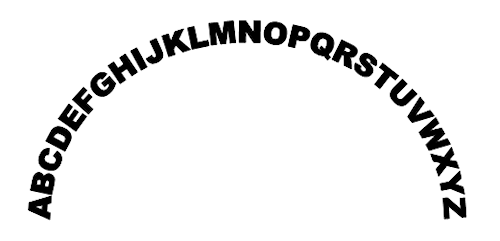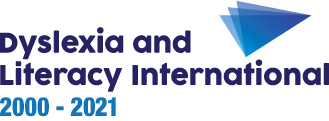Using a wooden or plastic alphabet




Another simple aid is an alphabet in wood or plastic which can be felt and manipulated.
The tactile sense will reinforce the visual sense.
Get the children in the class to copy the letters of the alphabet in order to stimulate the manual-kinaesthetic modality, including the ‘muscular memory’.
It is better not to start with an alphabet in lower case letters because some letters are easily confused:
b – d, p – q, n – u, m – w, t – f
compared to those in upper case
B – D, P – Q, N – U, M – W, T – F
Children with dyslexia often have problems of spatial orientation. This means they can be confused between ‘b’s, ‘d’s, ‘p’s and ‘q’s, the same shaped letter that corresponds to four different ‘sounds’ depending on how it is positioned.
There are various tricks to help them remember the correct correspondences. Here is our preferred one: if the children know that we read from left to right and that ‘b’ comes before ‘d’ in the alphabet, ask them to make two fists on front of them with the thumbs at right angles, pointing up. The left hand will have the shape of a ‘b’, while the right hand will have the shape of a ‘d’. You can apply the same trick to ‘p’ and ‘q’, with thumbs down, as illustrated below.
Trick not to confuse ‘b’ and ‘d’

Trick not to confuse ‘p’ and ‘q’

When you have an alphabet in wood or plastic ask the children to place the letters in the shape of an arc or rainbow, as shown below, so that they can see all the letters in front of them.

According to the age and ability of the pupils, you can carry out an unlimited range of activities and games to fix the sequence of the alphabet.
They need to be able to grasp it automatically.
If you haven’t got an alphabet in wood use modelling clay.
You can also ask the children make the letters with their bodies by taking up the physical position of the letters, either upright or on the floor. This is easier than it seems. What is more, this is an excellent way of familiarising children with the spatial characteristics of letters.
It is very important to establish a clear distinction between the names of letters and the sounds of letters, and to make sure the children understand the difference. Practice them using the ‘I spy’ game.
We advise that you start with the names of the letters, without giving their sounds, and then teach the sounds of the letters separately. In the exercises, take care not to accept a name for a sound, or a sound for a name.
Here are illustrations of some of the activities that can be performed with the alphabet, shown here with Joshua.
Alphabet sequencing (setting out the arc)
Alphabet reciting (names and sounds)
Tactile recognition of the letters of the alphabet
Alphabet sequencing (reinforcement)
ACTIVITY 19
Now with your course partner think up at least five activities to reinforce knowledge of the alphabetical sequence using an alphabet in wood with the aim of involving different sensory modalities.
Compare your answers with the suggestions given.
Everybody closes their eyes and each gets one letter. They have to recognize it by feeling it. Then they open their eyes to see if they have identified the letter correctly.
Now to help reinforce sequencing abilities, the pupil who has A lifts it and says its name, followed by the one who has B and so on.
This activity involves all four modalities (visual, auditory, manual-kinaesthetic and oral-kinaesthetic).
The pupils lay all the letters out, then they name each one while putting their hands on their mouth and on their throat to feel the movements associated with the pronunciation of each letter.
This activity involves the oral-kinaesthetic and manual-kinaesthetic modalities.
The pupils lay the letters out. They recite them all together and then in pairs with one pointing to a letter and the other saying its name or sound as quickly as possible. Then they reverse roles.
This activity involves the visual and auditory modalities.
Lay out a sequence starting from a given letter, then recite the alphabet from this letter, or (harder) lay out the letters in the correct order as they come out from the bag, or (even harder) place and recite the letters in reverse order from Z to A.
This activity involves the visual modality.
Lay out the letters in sequence, recite them, and then ask the children to close their eyes and say what letter comes before another; if they get stuck, ask them to feel the letter.
This activity involves the visual and manual-kinaesthetic modalities.
Lay out the sequence and ask the children to put one hand around their throat and say whether or not it vibrates when they say each sound (not name!).
This activity is strongly recommended for children with dyslexia who have difficulties in distinguishing the voiced from the voiceless consonants (See section 2) :
[ p ] vs. [ b ], [ t ] vs. [ d ], [ k ] vs. [ g ]
[ f ] vs. [ v ], [ s ] vs. [ z ], [ ch ] vs. [ j ]
This activity mainly involves the oral-kinaesthetic modality
Ask them to lay out the letters in sequence, to say each letter as they touch it with a finger, then to close their eyes and move their hands to the left, to the right and then the middle until they touch a letter. Now they should identify it by feel, name it or pronounce its sound, and then open their eyes to see if they are right. If they are right, place the letter in the bag; if wrong put it back and continue until all the letters are in the bag.
This activity mainly involves the visual, manual-kinaesthetic and oral-kinaesthetic modalities.


